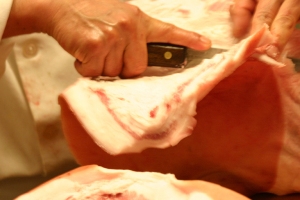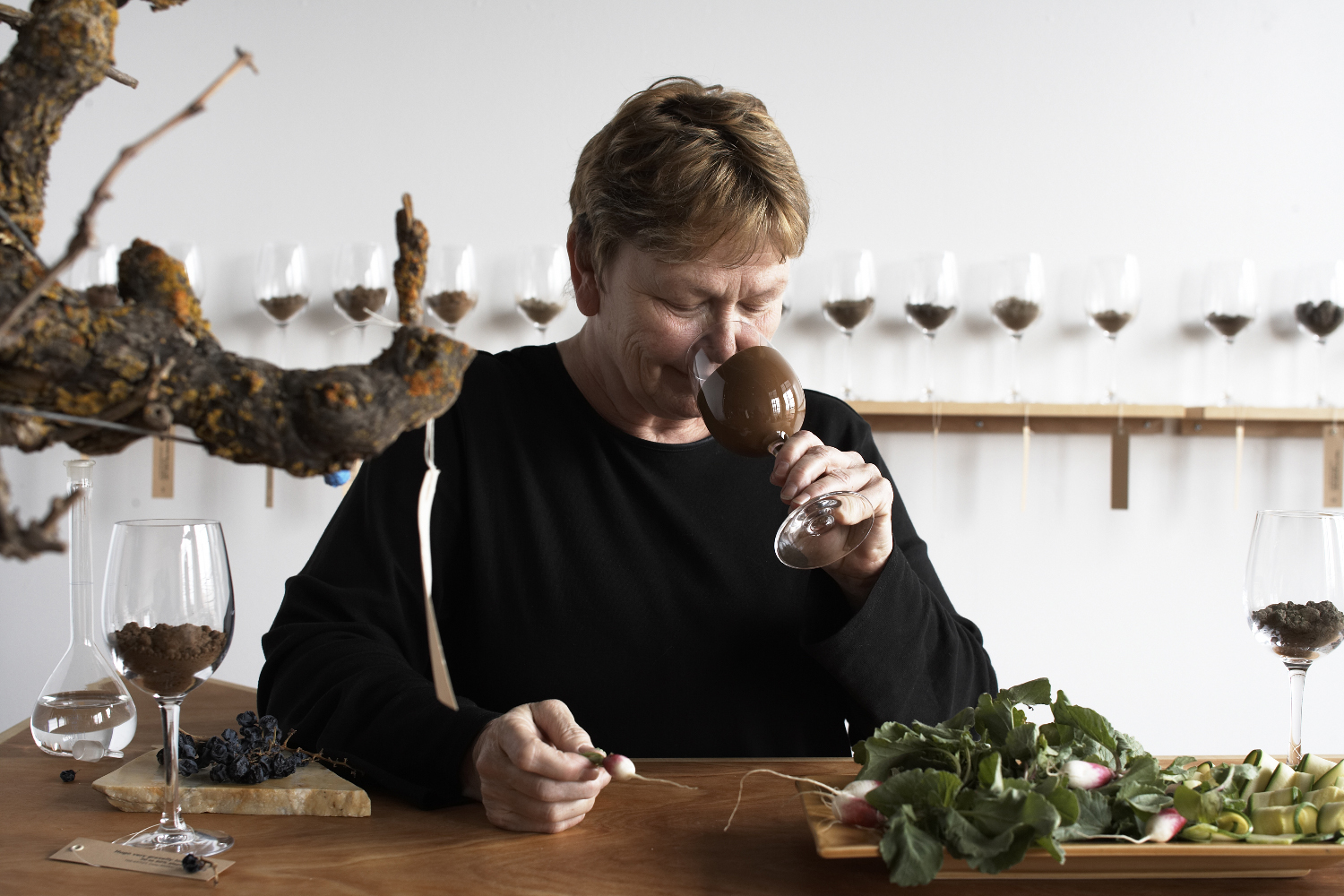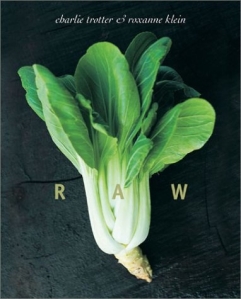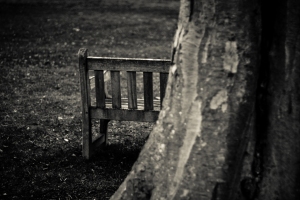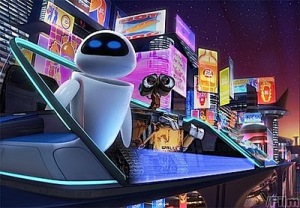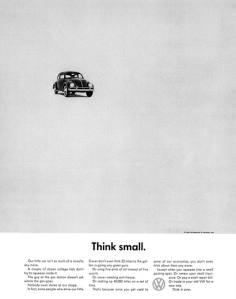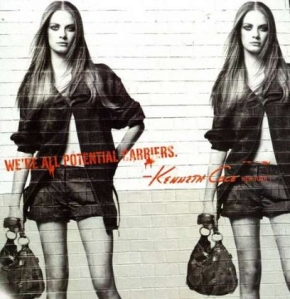(originally posted July 14, 2010)
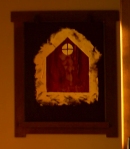
Seven years ago, the day before we opened Barndiva for the very first time, we hosted an unforgettable interactive art exhibit celebrating the work of ten renowned local food producers. Each food artist was paired with two other artists: one to document their work, the other to interpret it. The interactive part was that we invited guests to “eat the art” while they experienced it. 300 old friends, new neighbors, journalists, vintners, and tout Healdsburg descended upon the barn on a warm and sunny Saturday in July expecting to be wowed. We wowed them. Who could resist the heady perfume of art, food, wine and music, all served up in a beautiful new building on a perfect evening at the height of summer?
The entire day was our business plan writ large, with the central proposition that diva’s don’t just live in opera houses. When it comes to food there are people who hit the high notes every day of their lives in vegetables fields, olive orchards, dairies, bakeries... even restaurants shaped like barns. There was a sense that day, articulated by almost everyone who was here, that something exciting was gaining momentum in Healdsburg; that Barndiva was only part of a zeitgeist that was happening in our town, and towns like ours (which admittedly is not many) across the country. The term ‘farm to table’ didn’t mean what it does today; the concept of ‘artisan’ had only recently begun being applied to something you’d find on a plate in a restaurant. The adoration we lavished on our food savants felt new and exciting, an homage to hand made and home grown that felt wholly warranted and fully our own.
It was the greatest opening party Barndiva could have imagined. Of course we needed the good will, inexperienced as we were, to get through that first tumultuous year. And we were thrilled to have pulled off an exhibit of such great complexity to launch our business. But what we were most proud of was the $16,000 we helped raise with Slow Food Sonoma County, our partners for the event, to be spent on a program that would bring sustainable farmers to the kitchen doors of Healdsburg Public Schools to provide for their lunch programs.
 And so it went, with virtually every collaborative exhibit: Lou Preston’s wine was exhibited alongside Susan Preston’s installation piece of a single worn blue kitchen chair sitting, as if floating, on a mound of flour with a jug of their Guadagni on the floor. Ig Vella brought huge rounds of cheese and a lifetime’s worth of craft in his worn and irascible smile. Elissa Rubin Mahon stacked a dozen of her jams in an old wood box by the front door where they sparkled like jewels in a Bulgari window. John Scharffenberger sent slabs of different grades of chocolate and huge bags of chocolate nibs which we poured on a wine barrel below Michael Recchiuti’s accompanying ‘canvas’ of hand poured chocolate upon which he had painted a shimmering, incandescent barn. The smells of Olive Oil and Honey and Bread and Peaches ~ all other exhibits ~ filled the air, mingling with the laughter and music and talktalktalk.
And so it went, with virtually every collaborative exhibit: Lou Preston’s wine was exhibited alongside Susan Preston’s installation piece of a single worn blue kitchen chair sitting, as if floating, on a mound of flour with a jug of their Guadagni on the floor. Ig Vella brought huge rounds of cheese and a lifetime’s worth of craft in his worn and irascible smile. Elissa Rubin Mahon stacked a dozen of her jams in an old wood box by the front door where they sparkled like jewels in a Bulgari window. John Scharffenberger sent slabs of different grades of chocolate and huge bags of chocolate nibs which we poured on a wine barrel below Michael Recchiuti’s accompanying ‘canvas’ of hand poured chocolate upon which he had painted a shimmering, incandescent barn. The smells of Olive Oil and Honey and Bread and Peaches ~ all other exhibits ~ filled the air, mingling with the laughter and music and talktalktalk.Karen has chosen the artist Laura Parker to document her work and towards that end Laura has spent many hours at the farm that spring photographing apple trees in full blossom. She then transferred 55 images onto fabric panels that on the morning of the exhibit she slung across the entire rear of the barn. It was a gorgeous body of work. Remarkably, she’d taken an inherently flat, captured image and given it back the life it once had out in the fields. Karen and Laura are good friends, which you could tell from the way their pieces played together. There was also something wonderfully incongruous between the mothership starter floating in a huge glass bowl of rust colored cider, and these ethereal blossoms, splashing sunlit patterns through the air, moving like a curious school of butterflies, hovering, but with no intention of landing.
Laura and I connected that day, talked briefly, then lost touch, except for infrequent emails about our respective openings. From hers I gleaned that she was mixing up her time between fine art, highly sought after pastel images of fruit and vegetables (presently on exhibit in Studio Barndiva), and interactive work which sounded more experiential than performance. It wasn’t until she sent something about a new project called Taste of Place that I started playing closer attention.
Taking the current interest in terroir out of the vineyard and bringing it to the farm, Laura was making the case that everything we eat, not just wine we drink, has a indelible fingerprint connecting it with the soil it is grown in. She visited farms and tramped around, meticulously labeling soil samples, which she then put into wine glasses for folks to smell and discuss. She only used dirt from sustainable farms (fyi: soil becomes dirt when you take it away from where you find it). She didn’t ask anyone to taste the dirt (though some did) but she made the case that by smelling deeply we are in fact tasting: scientifically that’s what happens on the sides of our tongues when we salivate, the result when something piquant ~ in this case dirt with a little water added ~ hits our olfactory senses. What she found from the first few interactive shows was that often just the smell of dirt played a strange alchemy on memory. It can bring back a moment in time when we were very young, before dirt was just something to wash off. Sound implausible? Maybe, but this is exactly what happened to Geoffrey at the Taste of Place lunch Laura put on at the Boonville Hotel in 2008.
I have a long history with the Boonville Hotel: I was among the second round of investors when the restaurant was in its glory, and it provided my first real connection to Anderson Valley. Ironically, given what I do now, it also exposed me to a style of country dining I’d only ever seen in Europe, where it’s not unusual to see some of the food you are eating growing or frolicking in the fields beyond the dining room windows. The hotel is now owned by Johnny Schmitt, Karen’s brother, a wonderful cook who had worked with Laura and her farmers to create a soil-paired meal I had no intention of missing. My husband thought otherwise. On the day of the lunch, with temperatures already climbing over 80, it was all I could do to get him in the car.
The first thing that strikes you when you experience Laura’s Taste of Place is how different the soils look when you are able to study and compare them, side-by-side. Some soils are deep and rich, while others look almost too thin to support growth of any kind. Some are rocky, with bits of granite, some smooth as silt, several so light and airy they seem to be crawling up the sides of the glass.
There are two ways of describing what happens after that. The first is to take a page out of wine Terroir vernacular (albeit tongue and cheek) as indicated from crib notes Laura and Karen wrote about the Philo Apple Farm.
Philo Apple Farm – Flood Plain, Navarro River District. Unlike the Indian Camp Ground variety, flood plain has a yellow mustard color. It's texture is hard and clod like. A bit less exotic in aroma, but more varietal, with olive and mineral notes, and a bit weightier finish. The nose here is clay and smoky with huge extract and extraordinary elegance.
Then there is the way Geoffrey experienced Taste. First he stuck his long aquiline nose into a glass of “Indian Campground: Arrowhead Reserve” and inhaled deeply. Then he furrowed his brow, closed his eyes, sighed. “This brings me right back to our coal cellar in London when I was 5." He looked up at Laura and smiled. “It’s the smell of anthracite and moisture. God, I spent hours playing down there, with this smell in the air.” Later, in the car on the way up to the farm he remarked that he hadn’t thought about those years for a long, long time.
It is amazing to me, and quite wonderful indeed, that after seven years we are still talking about the sanctity of the soil here at Barndiva. Since Ryan arrived the idea behind “eat the view” has taken on even greater meaning. It’s not just a nifty tag line for our patrons anymore, but embedded deep within their enjoyment of everything we surround them with here at the Barn. With inspired cooking, as with bio-dynamic farming, it's hard to know where the passion ends and the science begins. A growing part of me feels we may be seeing the beginning of a thoughtful re-consideration of why food tastes the way it does, which could even lead us to a reappraisal of the very concept of nourishment. There is now talk about Secondary Metabolites in plants which, while they have probably been around since the beginning of time, are only now being studied for the possible secrets they hold in protecting the plants that produce them. If we are ever able to unlock that connection, they may someday be able protect us as well.
These are exciting times to be considering taste and how it applies to farming practices and food. What’s most incredible is the fact that this new frontier has been here all along, where it’s always been, right beneath our feet.
If you missed our opening party seven years ago, now is your chance to share an historical evening at Barndiva. If you were here for The Taste of Art, thank you for your continued patronage. We hope to share A Taste of Place with you in August.
(originally posted July 3, 2010)

Once upon a time Lukka, Jesse, and Jil called LA home so we were especially pleased to read such wonderful coverage of Healdsburg and Barndiva on the front cover of Saturday's Travel Section.
Great pictures in the articles, be sure to click on them!
Healdsburg: For foodies, a new northern star
(originally posted July 7, 2010)

I went to a party last week in Santa Rosa. First warm summer night, great music, lots to eat and drink. As the evening began to wind down I found myself happily ensconced in a deck chair by the pool with people I had never met before. One minute we were having an innocent chat about BP’s CEO, wondering aloud how he could sleep at night when talk seamlessly morphed into a conversation focused on things in our personal lives that we were ashamed to admit we did. Anonymity and alcohol easily carried us to a casually intimate place that somehow felt comfortable, like a collective sigh. It was dark and the band had taken a break and there was a lovely waterfall sound emanating from the stone walls that surrounded us. Not far from where we were sitting a dwindling group was still playing bocce, so every now and then the solid thrack of one ball hitting another ricocheted in the air.
One fellow said he cheated on his taxes. Sometimes. Not big things, mind you, little things the government had no right sticking their nose into. A woman, mid-thirties and more drunk than the rest of us, giggled and said she fantasized about cheating on her live-in boyfriend. She loved him but sometimes she felt time whizzing by, while she watched, standing perfectly still. A heavy set woman sitting at the far end said she went through a phase where she would steal magazines from Whole Foods, and justified it to herself because they were such a big company. Cheating seemed to be the theme of our confessions, but when the conversation came around I heard myself admitting that sometimes when I couldn’t sleep I crept up to my office and watched The Housewives Series on Bravo for hours. Didn’t matter which city ~ New York, Orange County, New Jersey ~ the women were all interchangeable and uniformly dreadful, a fact which they happily compounded by allowing their obtuse lives to be played out on national TV.
A silence enveloped the group. Finally the tipsy girl piped up and said I know what you mean. I can watch a whole season of The Tori Spelling Show in one sitting. The tax evader asked if DIY shows counted. No way all three women shouted. At least you can learn something from them, the girl said. The woman at the end sighed. We all watch crap TV, she said, it's just harmless fun, what’s so bad about that?
I had no idea, but for me, I didn’t think it was just about fun. And I wasn’t quite sure about the harmless part either.
 I am not a snob when it comes to TV, or film for that matter ~ if it moves I will pretty much watch it, or at least give it a chance. I’m as stumped by the guy who can ‘only’ listen to classical music as by the guy who brags he’s never listened to it before. Of course it’s true that quantifiable genius separates Ibsen’s A Doll’s House from Russ Meyer’s Valley in the Dolls, but they basically have the same plot and come to the same conclusions about the human (female) condition. And truth be told a hell of a lot more people watched and read and wept over Jacqueline Suzanne’s overwrought story of female subjugation then ever sat through an Ibsen play. Great themes and their denouements come in a variety of disguises; it's up to us to decide which ones we will rely upon to get us through the night.
I am not a snob when it comes to TV, or film for that matter ~ if it moves I will pretty much watch it, or at least give it a chance. I’m as stumped by the guy who can ‘only’ listen to classical music as by the guy who brags he’s never listened to it before. Of course it’s true that quantifiable genius separates Ibsen’s A Doll’s House from Russ Meyer’s Valley in the Dolls, but they basically have the same plot and come to the same conclusions about the human (female) condition. And truth be told a hell of a lot more people watched and read and wept over Jacqueline Suzanne’s overwrought story of female subjugation then ever sat through an Ibsen play. Great themes and their denouements come in a variety of disguises; it's up to us to decide which ones we will rely upon to get us through the night.
So my nocturnal relationship with the surgically enhanced ladies of Reality TV was not repugnant because I looked down on the form it was coming to me in. And while one would be hard-pressed to find uglier examples of women in the 21st century, there’s also not much change left in spending time with characters simply because you feel superior to them. For a while I ran with the assumption that the Housewives Series was a cautionary moral tale ~ with apologies to Goya ~ a 21st Century Los Caprichos about how tragically our venal desire to acquire things has lead us astray. For the past fifty years we have been force fed an American standard which exalts an unbridled obsession with wealth. The girls had simply taken a step further and ordered their Kool-aid to go. But that still did not explain why I was watching it. If bling with a dubious moral attached was all I needed, I’ll take my Jay-Z straight up, thank you very much.
Television is the most democratic and popular medium ever created, even now as it is being subsumed by youtubitis. But from its beginnings the programs which held sway over the airwaves, while they used a variety of voices to keep us entertained, always aimed at a common dominator. (read: lowest). Classic TV programs like The Honeymooners, All in the Family, Sanford and Son, Seinfeld, Friends, all tackled big issues ~ marriage, dysfunction in the family, racism, friendship as a sustaining force ~ but played them out in a common vernacular that consistently and perhaps naturally veered toward the stupid. Name any great sitcom in the last thirty years and on some level stupid reigns supreme.
Still, the paucity of good programs I found in 1996 when I returned from a decade living in the UK shocked me. It seemed to parallel what had happened to food in America while I was gone: the plates had grown bigger while the nutritious value had exponentially diminished. My family went from four stations (two government sponsored!) to over 400, but with the exception of sports, choice felt remarkably more limited. There are still great scripted programs like The Soprano’s on TV ~ the Nurse Jackies, the Mad Men, the Friday Night Lights ~ but they grow ever more infrequent. Reality TV, meanwhile, continues to gobble up more and more air time. Dead cheap to produce, with no writers to pay, no sets to frame reference, no studio time to keep the industry alive, Reality TV proliferates because we are allowing a cost driven marketplace to buckle under massive competition from the internet. The irony is, because all you need to produce a ‘reality program’ is a cameraman, people who will do anything to have their five minutes of fame, and an editor with an eye toward cutting for commercial breaks, with reality programming the television industry has set in motion its own demise.
Some competitive programs like So You Think You Can Dance elevate struggling cultural forms by exposing them to huge new audiences. But generally Reality TV grows in stupidity instead of getting better. Take cooking shows ~ have you wondered why the initial progenitors like Mario Batali, chefs who really know how to cook and talk about food, have been forced out and replaced with ‘user friendly’ schlocky cooks like Paula Deen? Even Gordon Ramsey, an extraordinary talent who shaped one of the best food programs ever (The F Word) made while he was still in the UK, instantly dumbed down his act when he hit our shores, producing unwatchable crap like Hell’s Kitchen.
Then there is the Housewives Series, my bête noire of the moment. Like Survivor, and MTV’s Real World (the progenitor of reality shows) it would seem to focus on social interactions in their crudest forms ~ basically how we manipulate one another ~ which admittedly has some practical application in the workplace and relationships. But there are no resolutions, no winners, no achievements, just an endless stream of greedy people with narrow worldviews living meaningless lives. At what point does ignorance become culpable? Something happens when you spend time with people whose only notable ‘talent’ is that they have managed to invade the privacy of your home, bringing all the meaningless stupidity of their lives with them. I fear you don’t just watch stupid, you become stupid.
There will be no innocent bystanders in the war currently being waged on TV and the internet for a collective attention span that is shrinking in content, even as it gains in numbers. What we switch on when we drop our tired vulnerable bodies down on the couch and focus our eyes for a few hours each night ~ even when we do it for harmless fun ~ will ultimately make as profound a difference to the quality of our lives, and the culture we have to draw from, as what we put into our bodies when we eat.
It is our right and our mandate to demand more from the people making money off us. In the words of Thoreau “The world before me is of too much consequence to be merely observed.” There’s cheating on a spouse, cheating the government, cheating big business ~ none of them good to be sure ~ but all of them preferable, to my mind, to cheating on yourself, because that’s where identity and honesty starts in each and every one of us. Which is why, at the end of the day, my ‘confession’ in the dark actually was the worse one of all.
(originally posted June 30, 2010)
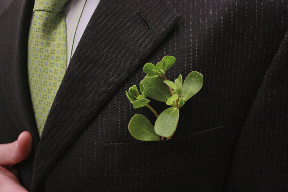
doing early in the morning...... Lukka's ideal, relaxing, magical day in Summer is a journey down the Russian River between Healdsburg’s Memorial Bridge and Wohler Bridge - an undeveloped, eight mile stretch of clean river that boasts some of the most exquisite and diverse landscapes in Sonoma County.
It's an easy paddle which rewards you with face time with herons, ospreys, turtles, egrets, and Lloyd the bald eagle who lives just after mile 2. Last week Lukka clocked 55 miles! Mondays are reserved for taking groups down the river (whoever shows up) with large coolers filled with copious amounts of delicious food and drink. Russian River Adventures SOAR canoes are inflatable, more stable, and extremely comfortable for lounging . . and owners Larry and Amanda will pick you up at the end of your journey, take care of the boats, and return you safely and most contentedly back to your car!
inspired by... We have more and more vegetarians dining at Barndiva, along with vegans and gluten sensitive guests. It's a misnomer to think that just because you eliminate proteins you lose a discerning palate or the desire for creative options when you dine out.
Ryan is loving re-visiting the vegan cookbook Raw, right now, because of the amazing array of color on every plate. Always a firm believer that people eat with their eyes first, color is a key trigger for him ~ whenever we get new art in the gallery he is immediately drawn to the most vibrant work. Now that summer is finally here he is looking forward to maximizing flavor without heat. "The images for these recipes remind us what bright and fresh looks like. They celebrate in every 'sense' that vegetables are still alive when they reach your plate."
 pouring...
After this rainy spring we are all ready to enjoy some crisp, lean Italian white wines while basking in the late afternoon sun in the gardens. Tommy has snagged us a few cases of Orvieto "Terra Vineate" from Palazzone, which has everything one would expect from great Central and Northern Italy whites: bracing acidity and minerality coupled with a subtle extra layer of opulence and glycerin.
Palazzone produces inexpensive yet highly sought after blends of Umbria's indigenous varietals (Procanico, Verdello, Grechetto, Drupeggio and Malvasia Toscana) the very same ones used to make wine centuries ago by the Ancient Romans and still coveted for their remarkable golden hues and intense flavours. The traditional Cepage is unique in that Palazzone includes a high percentage of Grechetto and Procanico which gives the wine an interesting note of hazelnut oil as well as distinct spiciness.
The best part for last: Organically farmed, hand harvested, indigenous yeast fermentation, bottled unfined and unfiltered...and only $10 by the glass in the Lounge.
pouring...
After this rainy spring we are all ready to enjoy some crisp, lean Italian white wines while basking in the late afternoon sun in the gardens. Tommy has snagged us a few cases of Orvieto "Terra Vineate" from Palazzone, which has everything one would expect from great Central and Northern Italy whites: bracing acidity and minerality coupled with a subtle extra layer of opulence and glycerin.
Palazzone produces inexpensive yet highly sought after blends of Umbria's indigenous varietals (Procanico, Verdello, Grechetto, Drupeggio and Malvasia Toscana) the very same ones used to make wine centuries ago by the Ancient Romans and still coveted for their remarkable golden hues and intense flavours. The traditional Cepage is unique in that Palazzone includes a high percentage of Grechetto and Procanico which gives the wine an interesting note of hazelnut oil as well as distinct spiciness.
The best part for last: Organically farmed, hand harvested, indigenous yeast fermentation, bottled unfined and unfiltered...and only $10 by the glass in the Lounge.
 mixing up...
On Wed we hosted a small mixer, one of several Barndiva will be throwing over the summer to say thank you to wineries, concierges, and wedding planners that have supported us. It was a great time to kick start our summer cocktails. New bartender Stephan came up with a wonderful libation for the coupe using pineapple sage from the gardens which we bought a few seasons back at one of Occidental Arts and Ecology Center's plant sales. He paired it with lashing of gin, sparkling water, yellow chartuse and St. Germain. For a peek at our specialty cocktails, check out our cocktail menu...but you better hurry as it's about to change again as more summer soft fruit starts to ripen.
mixing up...
On Wed we hosted a small mixer, one of several Barndiva will be throwing over the summer to say thank you to wineries, concierges, and wedding planners that have supported us. It was a great time to kick start our summer cocktails. New bartender Stephan came up with a wonderful libation for the coupe using pineapple sage from the gardens which we bought a few seasons back at one of Occidental Arts and Ecology Center's plant sales. He paired it with lashing of gin, sparkling water, yellow chartuse and St. Germain. For a peek at our specialty cocktails, check out our cocktail menu...but you better hurry as it's about to change again as more summer soft fruit starts to ripen.
 doing with our kids...
When 2 year old Teagan isn't searching for the perfect spot to go berry picking in Sonoma County, she's heading North this week to Portland. This summer's trip is to cheer on the kids from Girls Rock Camp. Her aunt, Marisa Anderson, is the Creative Director for this program which runs throughout the summer and teaches girls (ages 8-17) how to form bands, write original songs and play instruments. This spectacular program started in Portland, but now offers camps throughout the US and Europe.
doing with our kids...
When 2 year old Teagan isn't searching for the perfect spot to go berry picking in Sonoma County, she's heading North this week to Portland. This summer's trip is to cheer on the kids from Girls Rock Camp. Her aunt, Marisa Anderson, is the Creative Director for this program which runs throughout the summer and teaches girls (ages 8-17) how to form bands, write original songs and play instruments. This spectacular program started in Portland, but now offers camps throughout the US and Europe.
 jamming...
Turns out our bartender Sam Levy not only has a jones for jam but an incredible talent for making it as well! He will be working with Jil and Chef Ryan all summer as we buy up slightly soft or less than perfect fruit to wave our hot wand over. Voila, come winter we will still be eating peaches, apricots, berries...summer fruit!
When apricots from Coombs Ranch showed up this week (with just a little frost damage but great flavor) Sam got busy and came up with a smooth chutney with a hint of brandy, fresh ginger, and allspice ~ perfect to serve with our Artisan Platters. He is also working on a jam for Sunday Brunch with vanilla bean and carmelized Meyer lemon rind, and a cherry jelly which uses apricot and peach juice. Sam caught the jamming bug from his mum, who caught it from hers. At their house some days they have three generations going strong, using fruit from their own trees. We are thrilled to have a jam fanatic in the house this summer.
jamming...
Turns out our bartender Sam Levy not only has a jones for jam but an incredible talent for making it as well! He will be working with Jil and Chef Ryan all summer as we buy up slightly soft or less than perfect fruit to wave our hot wand over. Voila, come winter we will still be eating peaches, apricots, berries...summer fruit!
When apricots from Coombs Ranch showed up this week (with just a little frost damage but great flavor) Sam got busy and came up with a smooth chutney with a hint of brandy, fresh ginger, and allspice ~ perfect to serve with our Artisan Platters. He is also working on a jam for Sunday Brunch with vanilla bean and carmelized Meyer lemon rind, and a cherry jelly which uses apricot and peach juice. Sam caught the jamming bug from his mum, who caught it from hers. At their house some days they have three generations going strong, using fruit from their own trees. We are thrilled to have a jam fanatic in the house this summer.
 proud to see in print...
Great article in this month's Garden Design Magazine which features our own Mick Kopetsky and our great friend Bieke Burwell. Mick, who owns Mix Gardens with Bieke, is one of Barndiva's main vegetable suppliers and a dedicated Fork & Shovel member. He also recently took over Healdsburg Landscape Materials down the road which supplies many of us with great soil mixes and river rock ~ We know this because we just finished spreading about 12 yards in the new Studio Gardens. Great to see his accomplishments in print. We are thrilled his muse Bieke is back from London for the summer.
proud to see in print...
Great article in this month's Garden Design Magazine which features our own Mick Kopetsky and our great friend Bieke Burwell. Mick, who owns Mix Gardens with Bieke, is one of Barndiva's main vegetable suppliers and a dedicated Fork & Shovel member. He also recently took over Healdsburg Landscape Materials down the road which supplies many of us with great soil mixes and river rock ~ We know this because we just finished spreading about 12 yards in the new Studio Gardens. Great to see his accomplishments in print. We are thrilled his muse Bieke is back from London for the summer.
(originally posted June 23, 2010)

We don't want to brag, but we can't help being totally jazzed that the day after a superlative (his words) 4 hour dinner party at Barndiva, Jimmie Johnson had a incredible Nascar win at Sonoma's Infineon Raceway on Sunday.
Johnson, who Chef Ryan cooked for at the French Laundry, sent a rave review back to the kitchen after the meal, which he shared with 12 of his friends at our beautiful new Family Table in the front patio. Though we obviously can't take any credit for the win, we are chuffed we played a small but delicious part in the good spirits he took with him to help start his engine.
Our lovely hostess Gracie was there celebrating Father's Day with her dad to cheer Jimmie on.
(originally posted June 23, 2010)
 Sofia Coppola made a sweet little film a few years back called Lost in Translation, where an incandescent Scarlett Johansson meets a morally exhausted has-been actor played by Bill Murray in a hugely impersonal skyscraper hotel in Japan. Needless to say, the terrain they find themselves lost in is not just Japan.
Sofia Coppola made a sweet little film a few years back called Lost in Translation, where an incandescent Scarlett Johansson meets a morally exhausted has-been actor played by Bill Murray in a hugely impersonal skyscraper hotel in Japan. Needless to say, the terrain they find themselves lost in is not just Japan.
I’m thinking of this movie on Wednesday, standing in the middle of Target in Rohnert Park, when it suddenly occurs to me I’m in the remake playing the Bill Murray role, with Target standing in for Japan. Scarlett Johansson is nowhere in sight. A good number of exceedingly large people are however, gliding around me with shopping carts, some motorized, as I stand stock still with what feels like a classic Bill Murray look on my face ~ bemused, baffled, slightly demented.
The carts have no trouble navigating around me because the aisles are inordinately wide. Wide enough to swing a cat. They are also very clean. In fact the entire enormous store, as big as side by side football stadiums, feels like one big clean country. I know I am lost in more ways than one, and I’m pretty sure I don’t speak the language.
 The journey which lead me here actually started on Tuesday in another Target down the road in Santa Rosa. My good friend Bonnie Z and I left Healdsburg just after nine heading for a nursery to buy chef flats of basil and peppers for our gardens. As I also needed umbrellas for the front dining patio, and Bonnie needed a large grill for Dragonfly, we agreed on a ‘brief’ foray to Target and Costco to see if mega store America couldn’t fulfill our needs.
The journey which lead me here actually started on Tuesday in another Target down the road in Santa Rosa. My good friend Bonnie Z and I left Healdsburg just after nine heading for a nursery to buy chef flats of basil and peppers for our gardens. As I also needed umbrellas for the front dining patio, and Bonnie needed a large grill for Dragonfly, we agreed on a ‘brief’ foray to Target and Costco to see if mega store America couldn’t fulfill our needs.
Contrary to popular opinion, I am not a shopping snob. I will shop anywhere when the mood strikes, the Salvation Army, Ross, Barneys, Bergdorfs ~ bring it on. My usual litmus test for purchase is that sweet spot where beauty meets quality. But since I opened the restaurant and the gallery and began in earnest to meet the people who grow my food and make things I choose to sell, more and more, before I make any purchase I find myself wondering how an object came to be sitting before me in the first place.
Like most of us I can play fast and loose with the word ‘need,’ when desire strikes, rendering its true definition useless. How many pairs of shoes does a woman really ‘need?’ As far as I’m concerned it’s an unanswerable question, right up there with angels on the head of a pin. The frustration around sourcing a decent American-made umbrella every summer has lead me to make peace with the fact that until such a time as I start hand-looming them, Chinese umbrellas live in my world. It was the name right next to the words "Made in China" that took me by complete surprise.
If you haven’t been following the sad tale of what happened to Smith & Hawken, once one of the most wonderful companies in America, here it is in a nutshell: In 1979, Dave Smith and Paul Hawken opened a shop catering to organic farmers in Mill Valley in order to sell beautifully designed, handmade English gardening tools. That they were equally mindful of ecological and social justice issues made them visionaries for their time in developing what we now call a sustainable business model. The shop grew in its product line, and then into many shops and then into a corporation. But it held the line with its original ethical model. I still have the English bench (same one as Kew Gardens!) I bought from the flagship store. It has survived 28 years of storms and intense summer heat, yet managed to age to a beautiful smooth gray patina, yet with an integral strength which is rare for a garden bench (except for the ones in Kew Gardens!).
Smith retired after a few years to open a bookstore in Ukiah, but Paul Hawken soldiered on at the company, in addition to writing a number of significant books on his journey trying to create a mindful but profitable business in America. So far, so good. Then, in 1993 when Paul Hawken retired, the company began to change hands. It went first to a retail conglomerate that expanded the line and eventually went bankrupt, then was bought in receivership by a private investment company that quickly unloaded it to the Scotts Miracle-Gro conglomerate. Scotts Miracle Gro is a corporation at the top of a merchandising food chain quaintly known as "Grow and Kill" (to us layman, that means a company that sells gardening and chemicals). The irony of this purchase was not lost on anyone, except perhaps the GM at Miracle Gro, who blithely told the SF Chronicle that his company had only purchased Smith & Hawken to “make us seem more green than we are.” As if that wasn’t unintentionally droll enough, he concluded, “We want to enter categories less chemically oriented and much more female."
The first thought that occurred to me as my hand hovered was that perhaps the fact that Smith & Hawken had landed at a company known for using great design to move merchandise wasn’t necessarily a bad thing. Hadn’t great design been an indisputable part of Smith & Hawken’s original précis? Isn’t getting companies to acknowledge that things need to be designed well before they are sold a first step toward the redemption of production? The back-story on Target lines like Michael Graves and Issac Mizrahi is that their contacts with Target saved these iconic designers ~ both of whom had expanded too fast and had lost (or were about to lose) control of their creative empires. Designers need to keep working if they are to survive but it's valid to ask if this kind of pseudo design ultimately does more harm than good. It wasn't a question I was going to be able to solve with this one purchase however, so with a 'what difference can two umbrellas make' shrug I slung them in my basket, paid for them, and Bonnie and I got the hell out of dodge.
What happened next was a perfect ‘you can run but you can’t hide’ experience. I had not bought enough umbrellas. This necessitated yet another trip to Santa Rosa the next day, where I was belatedly informed that during the night gremlins (my word) had crept into the store and fiendishly marked all the remaining umbrellas in stock on close-out to make room for back to school gear (in June?) Since that morning they had been selling like hotcakes ~ that’s Target shoppers for you the salesgirl helpfully informed me ~ and they were all gone. Except for the floor model which they agreed to sell me. That’s when I made my fatal mistake. I asked if she might check to see if any other Targets had more umbrellas.
What commenced after that I am not completely sure. Target strategically places a popcorn machine at every entrance to their stores, so the first thing you smell when you pass through their doors is comforting. It’s a clever marketing ploy to make you feel relaxed, to slow time, and now that I’ve subjected myself to it I can attest to the fact that it really works. For the next forty minutes, life as I knew it went into suspended animation. I suspect this is where millions of Americans get lost in our country, some of them forever. The longer I waited the more I felt compelled not to give up and thus squander the time I had already wasted.
They located the last Made-in-China Smith & Hawken umbrella in Northern California, also a floor model, down the highway in the Rohnert Park store. This meant time spent in horrendous traffic because THEY WILL NEVER FINISH WIDENING HWY 101, then involved getting lost looking for the right shopping center. I found it but then had to park a mile away because, incredibly, all the spaces in all the rows directly in front of the store were marked handicapped. There simply cannot be that many handicapped people in Rohnert Park, can there? According to a clerk I asked once I finally reached the front door, if you count obesity as a handicap there certainly are.
Helpful as he was on this issue, neither he nor three other team members could tell me where Backyard World transitioning to Back To School World was located. So I began to wander, more Andy Warhol than Moses, but still a woman on a mission. I did not find umbrellas. I found: a row with 14 different toaster models (every single one made in China), two rows of shiny trash cans (ditto), picture frames, pickled things, Target sheets, hampers, rings for the shower, and row upon row of plastic this and that (ditto ditto ditto). I contemplated for far too long a close-out sale that included some very attractive lamp shades. I steered clear of the sections I knew were outright wrong ~ food and drugs ~ though by now the word drugs was starting to sound pretty attractive. It wasn’t until I found myself in the George Foreman aisle for the THIRD time that things started to unravel. I love George, but I do not want to be alone with an entire row of his grills again in this lifetime. Where had I gone wrong? I knew better then to get lost in translation.
I knew better because for me, at this point in my life, there is no middle ground left for pragmatic decision making when it comes to what I purchase and what I eat. I don’t have a large family to feed anymore. I know too much about how things are made. It doesn’t take a mathematician to figure out that when an object like a toaster is put together on the floor of a Chinese factory, then packaged and shipped and tracked and trucked and stocked on the aisle of your megastore of choice, it shouldn’t cost “only $12.99.” Something is seriously wrong with that equation. If you have any doubts about where our greedy dependence on cheap fossil fuel driven products has lead us, turn on your TV and take another good look at the oil burbling up from the depths of the ocean in the Gulf of Mexico.
Still, it’s possible that the aroma of fresh hot popcorn or even Scarlett Johansson might have saved me from this dénouement, which I know full well will bring a world of tsuris for me in the future. The thing is, only a few aisles away from where they pop their corn at Target, the lovely smell dissipates completely. From there on out, as far as you can smell, all you get when you sniff the air is the vaguely synthetic odor of guilt.
Links: Paul Hawken has a number of wonderful books really worth checking out.
Go Local is a Sonoma based co-op that supports local businesses and runs a number of exciting educational programs throughout the year. Join them!
Consider alternatives when you make purchases, especially big ones for your home. Friends recently demurred buying a foreign made fridge and bought a Sun Frost instead, beautifully made right here in Arcata California. They love it.
Or how about giving Pottery Barn a pass the next time you need dinnerware. Most of the best designs you see in catalogues like Crate and Barrel are stolen from small but talented designers. For gorgeous pottery that will grow old with you check out Aletha Soule, whose studio is right down the road in Sebastopol.
(originally posted June 16, 2010)

I’m not being specious, there really is a difference between the two, one that goes deeper than a name. It’s Dad we will take out for brunch or dinner this Sunday, not Father. Just like it’s Dad who bought us ice cream when Mom told him we’d had enough sweets for the day. Taught us to ride a bike, then a car, for which he paid the insurance, and repairs when we had the inevitable accident forgetting in an instant all he taught us. It’s Dad who imparted a sense of security to our early lives, even if all he did was be a solid, sleeping presence down the hall.
I love dads, I love the ones I know and the idea of dadness in general. The sporty kind who shows up at school meets, the pedantic, stick in the mud kind, who, it turns out, said a bunch of stuff we try to live up to every day now that we are adults. The tinkers, the thinkers, the ones who cook, even if badly, when no one else is around to put dinner on the table. I especially love the ones who try and fail at a multitude of things in their lives, but hang in there, even when we realize, years later, that they must have been dying inside at how hard success, and sometimes just living, turned out to be.
Fathers, on the other hand, bring a whole different game to the playing field. Check it out: we have Father Time, Father Christmas, the Father of our Country (which in our case is George, but every country has one) and not last, certainly not least, Our Father Who Art In Heaven. Fathers are the big theme winners in the game of life: Time, History, Power, and Religion ~ they hold all the cards. Even old Saint Nick (his other name) the jolly, seemingly benevolent one, is a potential game changer if he deems your behavior warrants it.
These are powerful masculine entities who have controlled history and held sway over every big decision we’ve made in the civic realm from Plato on. So what compels us to call them by a declarative name which by rights should be reserved for the real flesh and blood guy who taught you to throw a soft ball? Where did the practice of calling them Father come from? Does it make the King more user friendly, less likely for us to overthrow? Strengthen our connection to God in a way that deepens it? For whose gain? Forgive me for asking these impertinent questions. One of the great things I learned from my dad was to be unceasingly suspicious.
My dad grew up in an era when good and evil were clearly delineated, where honor, not wealth, was the defining characteristic of a man. He’d gotten all the way through to his mid-30’s a bachelor, and if his life was not completely carefree ~ he supported his mother, four sisters, and a brilliant but invalid brother ~ he enjoyed a quintessential New York high life where Sinatra was the soundtrack and even dames wore gloves to dinner. An exceedingly handsome man ~ Clark Gable with less hair is how my mother once described him ~ while he played all night, he always returned home to his mama (and responsibility) in the morning. The age of Sex, Drugs and Rock n Roll in which he was forced to raise his children must have presented epic questions for him, and no small amount of frustration. Short tempered when faced with what he could not control, he barked a lot around the house. But there was no bite to the man when it came to his daughters. My dad’s whole raison d’etre was to see his daughters succeed ~ a goal which required enormous sacrifices that I’m not sure he was ever amply rewarded for. That he didn’t do it for the glory made him a perfectly normal dad and totally terrific.
Which didn’t stop me from being disappointed in him when I was growing up. Historical archetypes have their doppelgangers in popular culture in a way that affects us deeply. I secretly wanted a father just like Nancy Drew's. He never meddled in her business, in fact he was conspicuously absent while she drove around the countryside (in the coupe he had given her) solving mysteries. But he always managed to arrive in the nick of time when she needed him to get her out of trouble.
Instead I was stuck with a dad who told corny jokes and yelled advice from the balcony instead of talking to me in quiet measured tones like Atticus Finch talked to Scout. That I held his lack of erudition against him is understandable, given my age. What’s sad is that even nowadays, when parental stereotypes have gone through so many changes, too often we still miss seeing our fathers for their unassuming virtues. Mine, as it turned out, was blustery but unfailingly brave in the face of moving cultural targets that loaded on financial pressures. He wasn’t Father Knows Best, because he didn’t know what was best ~ who could have in those frightening times, fraught with psychological baggage which seemed to emanate from deep global uncertainty, much like today. If he didn’t know best, he nevertheless wished for the best. Without guile or motive. From what I’ve learned of life since then, this well-spring of loyalty, this selfless pride, is one of the greatest gifts of love we have to bestow on one another.
I’ll let you in on a big secret: Most of what mothers do we do because we don’t have a choice. Instinctive or intuitive ~ it doesn’t matter why, our responses to the great challenges of motherhood are driven by something deep within us, a primordial knee jerk reaction. We can’t help ourselves. A mother doesn’t throw herself under the bus to save her child because she thinks it’s a great idea.
Though I’ve never been one, I get the feeling dads aren’t wired quite the same way. When they stick around, through thick and thin, it's elective, not because their hormones and 2,000 years of genetic imperative force them to. For the ones that do stick it, and despite what you read the large majority of them do just that ~and then some ~ it’s all about character. And choice. Which makes their roles in our lives all that more amazing, when you come to think of it.
(originally posted June 9, 2010) Where do you want to be in five or ten years? Do you want to die with the most toys, or do you want to die with the best life and experiences? -Tibor Kalman
In the normal course of our day we are exposed, literally, to thousands of unsolicited messages ~ in newspapers, magazines, on television, billboards and, increasingly, on the web. Whether you live in a farming community, a suburb or a metropolis, this adds up to trillions of images and voices in your ear over a lifetime. It doesn’t matter if you never succumb to any of them ~ never eat the $6 burger for $2.99, cruise the boulevard in the Ultimate Driving Machine looking for skinny jeans, or seek relief from a “serious medical condition” you innocently thought was only heartburn. For your entire life you will be exposed to a tsunami of words and images that will flood your cerebrum pretty much non-stop during your waking hours with the intent to cajole, entice, and manipulate you into believing, then buying, the entity behind the message.
Don’t kid yourself that by not paying attention or rarely succumbing you can avoid the effects of our intensely commercialized visual culture. You can’t. We are basically animals whose survival instincts keep us monitoring the horizon for the next meal or the tiger who wants to make us his next meal ~ we’re programmed not to ever fully turn off perception of our surroundings. Information we don’t need to feed ourselves or keep us safe we still have to store somewhere. ‘Tis the nature of subliminal. For all we know we're dreaming about the the blond in the Skyy Vodka ad while we sleep. (or the brunette in the Ty-D-Bowl commercial). All of which makes it pretty relevant to ask why 99% of the ubiquitous sales-motivated design that’s out there is such crap. Stupid, ugly, habitually misogynistic and, when it comes to misleading political ads (yes, they are selling something too), dangerous in the extreme. The Madison Ave mind set which went global in the 70’s, flawlessly captured in the HBO series Mad Men, has cheapened sex, twisted our notion of beauty out of all proportion, and made monitoring our frailties, instead of our strengths, a national pastime.
And yet, call me foolish, I am nevertheless fascinated by the potential of vernacular design ~ the ubiquitous signs, billboards, TV and web adverts that compose mass culture. For a start, the tools at the fingertips of both the artist and the adman are virtually the same. An ad is a Rorschach mix of words and pictures which needs to convey a message in an exceptionally condensed period of time, usually seconds, less if the image is a still one. How to do that and manage to instill a message that lingers is daunting. But the creative possibilities are endless. Or should be.
Think how much more enjoyable it would be to move through our days if only a little more talent and pride was focused on delivering messages that appealed to our critical sensibilities, instead of insulting them. Why is it then, that advertisers almost always pander to what they construe are our base instincts? The English critic Philip Toynbee called it the result of “an impoverished ability to communicate.” It’s not an impoverishment relegated to the advertising industry alone. But in their role as a major contributing factor to the crass stupidity everywhere that is demoralizing us as a culture, it’s a medium which provides a perfect Petri dish for study.
When I asked ten people why they thought the advertising industry was so insidiously bad, seven of them said it was the nature of the beast to appeal to the “lowest common dominator.” I’ve used that excuse myself in the past, but while it may make us feel superior (surely they didn’t intend that annoying Aflac duck to appeal to moi) it really isn’t a helpful answer. There is nothing wrong with finding common denominators in our culture ~ correct me if I’m wrong ~ but isn’t that the basis of democracy? It’s the fact they always seem to stoop to the “lowest” level to find them that’s worth challenging.
Unlike a painting in a museum, where you can linger over brushstrokes, or the two hours you spend getting to know the characters in a movie, the ‘art’ in an advert doesn’t have time or much space to tell a complete story, it has to imply one. Because of this, whether or not we are aware of it, we are all masters of a curious form of sub-text. When an ad nails sub-text, whether it does so through humorous or dramatic means, we take notice.
Famous case in point: with its “Think Small” campaign for Volkswagens in the 60’s, the ad agency hired by VW was faced with finding a way to sell an odd, ugly looking car, made in a former Nazi plant, that was half the size ~ with none of the bells and whistles ~ of any automobile then on American roads. The agency, Doyle, Dane & Bernbach, choose to define their product in a stark but humorous, refreshingly honest fashion. The sub-text of “Think Small” was “utility,” and the public not only got and liked the message, it bought the car by the millions. In one great design stroke a single ad campaign arguably changed automotive history.
Volkswagen took a risk because they had to. But more to the point, they delivered what the ad implied. If we rarely see this combination of creativity and truth in advertising in the products being sold, we ~ the common dominators ~ have only ourselves to blame. We vote with our wallets.
Starting In the 1980’s, Ben and Jerry’s Ice Cream, Paul Newman’s Own and Kenneth Cole devoted untold advertising dollars to promote social and environmental change. That they were able to do this while simultaneously increasing their bottom line was accepted (and respected) by their public as sustainable business models. That those companies were willing to make the connection between product and producer only worked in the long run because the products themselves were good, so even after being seduced by the come-on, we continued to buy them. Of course we don't have to limit ourselves to only buying products from companies that care about the long term well-being of their constituencies. I don't really know the deeper social agenda of Steve Jobs or Mac; from the beginning they have mounted ad campaigns which have accurately, cleverly, and often powerfully positioned products which deliver what they promise, thus ensuring a growing family of users over time.
I’m aware, of course, that many bad companies have great design. Nike comes to mind and you can think of dozens more. Differentiating the line between eye candy and visual porn, while rejecting useless corporate sites, marketing drivel and meaningless design is ultimately up to us, the consumer. Get rid of the product and you get rid of the need to sell it.
One of my favorite adman savants of all time was a curious fellow by the name of Tibor Kalman. Irreverent and often profane, Tibor eschewed a career in PR which might have afforded him “a good opportunity, a nice career, a chance to make a killing,” for one that “affects people’s lives and affects people’s brains.” Diagnosed with cancer in the 90’s, his response was to move to Italy to work with Oliviero Toscani on a series of controversial print advertisements for the huge clothing company Benetton. Together, with Benetton’s money, they went on to create the groundbreaking design magazine “Colors,” which many feel set the bar for cutting edge design with a pertinent social message.
Both Kalman and Toscani believed advertising had a creative responsibility, but they clearly understood the difference between their medium and fine art: they didn’t espouse an elitist approach. Both sought to rethink the relationship between the commercial and civic realms, both grappled with how best to serve the demands of business while raising the bar on artistic expression. For Tibor it was about “the struggle between individuals with jagged passion in their work and today’s faceless corporate committees, which claim to understand the needs of the mass audience, and are removing the idiosyncrasies, polishing the jags, creating a thought-free, passion-free, cultural mush that will not be hated nor loved by anyone.”
Toscani believed his responsibility as a designer extended beyond any one product to the nature of a medium itself, which he felt spoke a universal language. “The globalism of sales is not a bad thing to be avoided. It’s a blessing. Proclaiming that McDonalds is bad and should be banned is like saying you’re against photography because you’ve seen an ugly picture somewhere. You know what you should do? Take a better picture. THAT is revolution ~ not screaming in the streets.”
With the growing increase of ads on the internet ~ where it seems we will be spending the twilight of our civilization ~ it behooves us to take another look at why, with what IB Singer called “souls starving for oxygen,” we aren’t angrier and more vocal at companies trading in the public forum, companies we never invited into our lives in the first place, who clutter the visual landscape, insulting our intelligence while boring the hell out us. Talk about adding insult to injury.
We have, after all, the ultimate power in this design game that wallpapers our lives. All it will take is a little chutzpa. The first step is to throw down the gauntlet and say: We’ll only consider your product if you stop talking down to us. Amuse us, educate us, empower us, or get the hell out of our lives. For those companies with good products to sell, this should not be a stretch. And who knows, it may well be a start back toward influencing what is produced in the first place. Wouldn’t it be something if the proliferation of crap in the world slowed, simply because, before being manufactured, somebody at the top was forced to frame the question: “How are we going to sell this? The public’s not stupid, you know.”
Links: Annie Leonard is the bomb. The Story of Bottled Water is not simply a pithy expose on how we have come to be a nation that buys a commodity that should be free, it’s a neat way to understand how messages are disseminated in our culture. Show this one to your kids. The Story of Stuff The Story of Stuff Project
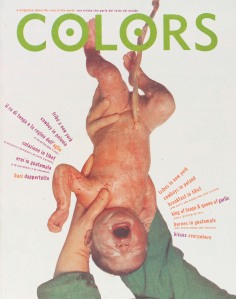 Check out Tibor Kalman's Perverse Optimist next time you are in the bookstore.
It’s worth owning if only to read the “F____Committees. I Believe in Lunatics essay.
Perverse Optimist: Tibor Kalman Princeton Architectural Press
Check out Tibor Kalman's Perverse Optimist next time you are in the bookstore.
It’s worth owning if only to read the “F____Committees. I Believe in Lunatics essay.
Perverse Optimist: Tibor Kalman Princeton Architectural Press
Kenneth Cole's Spring 2010 collection on You Tube is interesting.
Local Talent with a Long Reach:
Tod Brilliant is a wonderful PR guy with more than a little Tibor in him, who lives right here in Healdsburg. In addition to his own design work, two years ago he created a national design collaborative. Check them both out. http://www.todbrilliant.com http://www.creativejobagency.com
 Chris Blum is a local legend who has designed the logos and packaging campaigns of many products you may use daily like Thanksgiving Coffee and Rosie Free Range Chicken. One of his best designs (in our humble opinion) is the one he did for Barndiva Tractor Bar. Thanks Chris!
Chris Blum is a local legend who has designed the logos and packaging campaigns of many products you may use daily like Thanksgiving Coffee and Rosie Free Range Chicken. One of his best designs (in our humble opinion) is the one he did for Barndiva Tractor Bar. Thanks Chris!
(originally posted June 2, 2010) Studio Barndiva
Studio Barndiva is proud to announce the opening reception for Photographer Wil Edwards’ Art Of The Rind series, on Sunday, June 13, between the hours of 3:00 – 5:30.
The reception for Edwards’ astonishing new exhibit of limited edition color pigment prints is the first showing in our new gallery space. We are thrilled it will be co-hosted by some of America’s premier artisan purveyors.
Join Studio Barndiva and Cowgirl Creamery, Laura Chenel, Pt Reyes Cheese Company, The Fatted Calf, Cheese Plus & the vintners of Kelley & Young Wines for a stimulating and delicious afternoon celebrating the art of cheese, as never captured before.
(originally posted June 2, 2010)
 Barndiva received some wonderful press last week, which we wanted to take a minute to share with you. We have been very blessed over the years with incredible newspaper, magazine and online coverage. Incredible because we are a family with little PR experience that started a restaurant in a small town knowing next to nothing about the business. When we first opened we were flavor of the month, and that went on for a long time. But even afterwards, when the occasional barbs would come, we’ve tried to put criticism, good and bad, into a context that could help us understand what diners really want, what we might be missing. It was wonderful to hear what we’re doing right this week. Barndiva is our baby. We want the world to love it.
Barndiva received some wonderful press last week, which we wanted to take a minute to share with you. We have been very blessed over the years with incredible newspaper, magazine and online coverage. Incredible because we are a family with little PR experience that started a restaurant in a small town knowing next to nothing about the business. When we first opened we were flavor of the month, and that went on for a long time. But even afterwards, when the occasional barbs would come, we’ve tried to put criticism, good and bad, into a context that could help us understand what diners really want, what we might be missing. It was wonderful to hear what we’re doing right this week. Barndiva is our baby. We want the world to love it.
But it hasn’t always been easy to ‘simply’ define who we are, or what we are trying to do. Barndiva was very much a ‘build it and they will come’ adventure. We wanted to make the point that it’s possible to balance cool with accessible, serious with playful. There is a famous image from the 40’s of a café on a side street near the great meat markets of Les Halles, taken in the early hours of morning. Ladies in gorgeous gowns and men in tuxedos, all at the end of a glamorous evening, are sitting elbow to elbow with big butchers in blood-stained aprons, fresh from the market. Everyone is eating and talking, smoking and drinking ~ you just know the food is delicious. What struck me about the photo was how comfortable everyone looked, despite differences in class, the odd hour of the morning, the randomness that brought them together. The photographer had captured a moment where good food and the warmth it generates had brought a totally disparate group together. The meat markets of Les Halles are long gone now, having morphed into a giant underground shopping mall in the late 70’s. It saddens me to think restaurants like the one in the photograph disappeared with it.
 Imagine two ideal ends of the dining spectrum. At one end you have a great Thai (or Chinese or Indian) joint, with platters of food served in rooms that are too hot and overcrowded, where service is rushed, the waiter is perfunctory, the music (if any) is scratchy, and you don’t give a damn because the food is so delicious you want to eat it with your hands. We return again and again to that place.
Imagine two ideal ends of the dining spectrum. At one end you have a great Thai (or Chinese or Indian) joint, with platters of food served in rooms that are too hot and overcrowded, where service is rushed, the waiter is perfunctory, the music (if any) is scratchy, and you don’t give a damn because the food is so delicious you want to eat it with your hands. We return again and again to that place.
Now travel to the other extreme. Lots of room between the tables. Sound is hushed. Waiters glide. Plates are composed like a Caravaggio still-life, using ingredients in ways that test what you know about taste and texture, making you think about flavor anew. A big bill is coming at the end of this meal, but if it’s been perfect (and it has to be perfect) you won’t care. You are happy to be alive and able to afford it. When you can, you will come back here too.
Barndiva doesn’t fall somewhere in the middle of these two restaurants, that wasn’t why we entered the game. Middle is not what we do best. We wanted to take the vital parts of both of these experiences and combine them, to create a business that was uniquely honest in the way it approached sourcing, preparation and presentation of food, but nevertheless managed to elevate the dining experience, to make it really special. We wanted to design a space where every piece of the room celebrated the food on the plate and the act of eating. The visceral act of eating, that was crucial for us, but so was the before and after. We wanted fresh soundtracks and soft lighting. We wanted to show some love in the service, not just professional indifference. We didn’t want stuffy. We wanted the opposite of stuffy. We have all suffered through one too many evenings of “fine dining” where a ‘church of food’ approach demands supplication, taking the air out of the room, along with any spirited conversation.
 We got a lot of props those first years from so many strangers who “got” what we were trying to do, but we also found there was no way to make everyone happy. For some the music was too loud, for others the lighting to low to properly read the menus. We had very few seasoned servers the first few years, preferring to hire children of friends and neighbors who dined with us, but while it was true they didn’t come to us with tired old habits from other restaurants, their enthusiasm did not make up for their lack of experience. Great restaurant service is not instinctive, it must be learned, and in order to be learned, it must be properly taught.
We got a lot of props those first years from so many strangers who “got” what we were trying to do, but we also found there was no way to make everyone happy. For some the music was too loud, for others the lighting to low to properly read the menus. We had very few seasoned servers the first few years, preferring to hire children of friends and neighbors who dined with us, but while it was true they didn’t come to us with tired old habits from other restaurants, their enthusiasm did not make up for their lack of experience. Great restaurant service is not instinctive, it must be learned, and in order to be learned, it must be properly taught.
One reviewer in the early days called our menu, which we had flavor profiled into categories of ‘light, spicy, comfort,’ “Barndiva’s mood food.” He wasn’t wrong ~ we all set out to dinner in a frame of mind that the restaurateur is wise to acknowledge ~ but it looked silly in print. On the other hand, the last thing we wanted to present to our guests was a polemic about our food. We put as much information as we could on the menu and hoped intelligent diners would ask questions.
 And so we learned, sometimes the hard way, to improve our game and fix what we could, without succumbing to the ever-present desire to take the easy way out and just give people what they were used to getting. I’m not sure why we are so stubborn about keeping it real. Perhaps in part because, in our short but interesting lives, it was usually the things we least expected that turned out to give us the most pleasure.
And so we learned, sometimes the hard way, to improve our game and fix what we could, without succumbing to the ever-present desire to take the easy way out and just give people what they were used to getting. I’m not sure why we are so stubborn about keeping it real. Perhaps in part because, in our short but interesting lives, it was usually the things we least expected that turned out to give us the most pleasure.
The recession has upped the ante with respect to making it in this high stakes business as there are decidedly less diners out there willing to part with their money without a good reason to do so these days. But the challenge of perfecting a hybrid like Barndiva is important enough to pursue even in these trying times. Maybe it’s more important now, considering that, thankfully, the underlying politics of food sourcing is becoming more relevant to diners.
I still find it hard to reconcile that even if you put everything you love into place ~ beautiful rooms and gardens, flowers, music, candlelight, inspired drinks, delightful plates of food ~ sometimes it’s just not enough. The timing is off, or one of your key players who should know their lines flubs them. You can apologize, but this being a performance art, prone to mishap, you just have to move on. Sometimes it’s the diner who has brought the unhappiness of his day (or his life) with him to the table and nothing you do is good enough, even if it should be, even if it is. Again, you have to move on.
 Through it all you try not to forget what made you get into this crazy business in the first place. Oddly for me, it’s not the nights of perfect service that bring that message home. Since Ryan joined us, and now with Tommy out front, we have many more perfect nights that ever before. But there is still that incredible frisson of not knowing what can happen when you open the doors. Back stage in the kitchen the mix is always heady and slightly dangerous ~ knives, fire, product from hundreds of mercurial purveyors in the hands of a few dozen people who are responsible for carrying out different complex pieces of a single unifying vision. Timing is crucial. So is the chain of command. While on stage in the dining room the scene is the polar opposite, romantic but charged, like a house before a party. Timing, for that first drink, between courses, again, is crucial. Mood, how to create it, how not to destroy it, is essential. Physical semaphore rules. A raised eyebrow can mean something is not quite right at the table and you need to get over there, or, wait, something is happening there you should not interrupt. In a split second, you need to know the difference.
Through it all you try not to forget what made you get into this crazy business in the first place. Oddly for me, it’s not the nights of perfect service that bring that message home. Since Ryan joined us, and now with Tommy out front, we have many more perfect nights that ever before. But there is still that incredible frisson of not knowing what can happen when you open the doors. Back stage in the kitchen the mix is always heady and slightly dangerous ~ knives, fire, product from hundreds of mercurial purveyors in the hands of a few dozen people who are responsible for carrying out different complex pieces of a single unifying vision. Timing is crucial. So is the chain of command. While on stage in the dining room the scene is the polar opposite, romantic but charged, like a house before a party. Timing, for that first drink, between courses, again, is crucial. Mood, how to create it, how not to destroy it, is essential. Physical semaphore rules. A raised eyebrow can mean something is not quite right at the table and you need to get over there, or, wait, something is happening there you should not interrupt. In a split second, you need to know the difference.
 Whatever goes wrong in the kitchen cannot be allowed to interrupt the flow of the evening out front. Everything is in play. Everyone is important. Every detail matters. Getting it all to hang together is magical when it happens, and can haunt you, for days, when it doesn’t.
Whatever goes wrong in the kitchen cannot be allowed to interrupt the flow of the evening out front. Everything is in play. Everyone is important. Every detail matters. Getting it all to hang together is magical when it happens, and can haunt you, for days, when it doesn’t.
We served 690 plates this past Saturday and until ten o’clock every one was presented to the diner having met chef’s exacting standards. We were rocking. This, despite the fact that the dishwasher had failed to show up for work and one of the big fridges broke down in the middle of service. Then, heading into the homestretch, with the dining room and both gardens packed, a full board of entrees to fire, inextricably, four plates slid from a shelf and landed with a terrifying crash onto the stainless steel table below, obliterating ten first courses and four desserts. I don’t know what Ryan and Tommy felt. I know what they did. They carried on.
At times like these I think of Alice in Wonderland. No one made her drink the bottle to change her size in the first place, curiosity made her do it. What she discovered in the end was that accepting risk was OK, so long as she accepted as well that growing larger and smaller goes with the territory. Changing shape without changing your essence is sometimes necessary to survive. Restaurants are a consummate collaboration, but for the key players, those of us who have chosen to crawl through the looking glass, growing larger and smaller is the skill we strive to master every night in order to create the art and the thrill of a great dining experience. The rest ~ the security, the reviews, the respect of our purveyors, our peers, and our customers ~ hopefully, will follow.
This is a true story you gotta love. We currently have not one, but TWO human incarnations of our favorite characters from the movie Ratatouille working at Barndiva ~ If you think I lie, check out the images below.


Remy, aka Francisco "Pancho" Alvarez is Barndiva's fast-as-lighting sous chef. Chef Ryan’s “adopted son,” he knows what Chef is thinking usually before he does. Linguini, aka Andrew "Drew" Wycoff is Chef Fancher's Entremetier, like his cinematic doppelganger full of heart and brimming with a beguiling coltish grace. We love them both and feel very blessed to have people of this caliber working with us.





